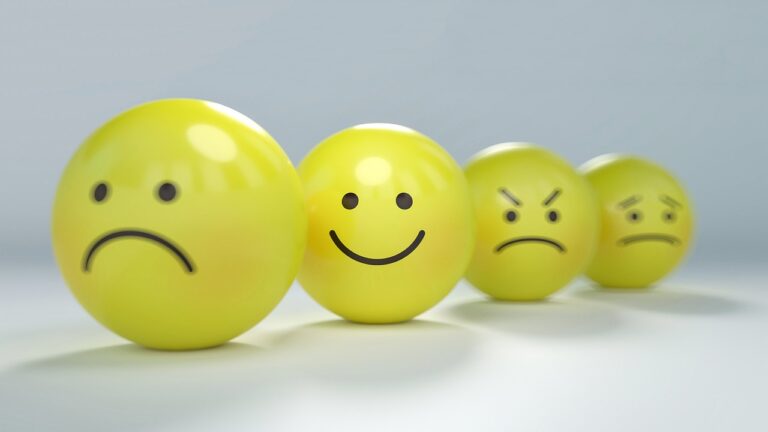The collective satisfaction of an organization’s workers – employee morale – is always an essential consideration for business leaders, and is especially pivotal during challenging times such as economic downturns or crises. High morale is crucial as it fosters resilience, ensuring employees remain motivated and productive amidst adversity. No matter the challenge facing a business, employees may feel overwhelmed, confused, demotivated, and disengaged from their workplace, all of which can contribute to a downturn in business productivity, talent retention, and other crucial benchmarks. In fact, according to a study on workplace engagement in the United States, disengaged employees cost organizations around $450-550 billion each year in retention and productivity losses.
The correlation between employee engagement and morale, and business success is clear. Despite this critical association, according to Gallup’s State of the Global Workplace, only 15% of employees are engaged in the workplace.
To combat the negative impacts of a lasting low-morale environment, businesses must understand how to motivate employees and create a workplace culture of appreciation, transparency, and purpose with a value on wellbeing. Prioritizing these strategies can aid in boosting morale in the workplace and make it easier for employees to navigate professional and business challenges in turbulent times.
According to Gallup, businesses with the highest employee engagement and morale scores showed 21% higher levels of profitability than those with the lowest scores. Companies with highly engaged workforces also scored 17% higher on productivity.
So, what practical steps do businesses take to improve workplace morale? One effective piece of the puzzle is introducing a regular cadence of team building activities and charitable corporate social responsibility (CSR) programs for your team. As you will see from our client’s example, the benefits of team building programs are a step in the right direction toward boosting morale.
The Challenge: A Manufacturing Company Faces Declining Morale
A manufacturing company reached out to BEST for help when they identified that productivity in their 50-person sales force was beginning to suffer due to a loss of business volume associated with a downturn in the economy. The “pressure cooker” atmosphere created unhealthy stress levels and perpetuated itself throughout the office. The employer felt that it was critical for his staff’s health and well-being to learn how to boost morale at work. They needed some tools and methods to deal constructively with the stress in the office.
Our client was seeing some of the frequent consequences of low morale come to life on their team. Leadership was observing:
- Increased stress: The negativity of the workplace environment reduces employee motivation and engagement, which increases stress due to dissatisfaction, decreased productivity, and feelings of undervaluation.
- Unhealthy work environment: Low morale promotes negativity, reducing collaboration and increasing conflict among employees, which can lead to higher absenteeism and turnover rates.
- Decreased productivity: With diminished employee motivation from low morale, productivity suffers from lower effort, increased errors, and a lack of initiative in completing tasks efficiently.
The Solution: Building Resilience Through Team Building
All of BEST’s programs target vital challenges and performance indicators for corporate teams. By considering each client’s unique circumstances through our needs assessment, we are able to tailor the programming to directly address the specific needs and challenges that the client is facing, including boosting morale.
The “Work/Life Balancing Act” Workshop
We designed a custom two-day “Work/Life Balancing Act” workshop incorporating proven methods for identifying and coping with unhealthy stress. The workshop explained how employees can improve certain psychological and environmental factors for stress management and a detailed exploration of the four stress zones. This approach targeted a key element—stress—contributing to the client’s low workplace morale and provided tools for employees to reduce stress and ultimately boost morale.
On the first day of the workshop, we revisited the true definition of good and bad stress. This laid the groundwork for exploring coping strategies for employees to manage stress. On day two, we used participants’ observations and learnings from day one to springboard into discussing stress reduction techniques in their personal and professional lives.
Identifying and coping with stress
We looked at the different types of stress through a fun, interactive exploration of a day in the life of an employee. We then discussed support systems for managing stress – co-workers, family members, and friends. Part of the goal of this workshop was to aid participants in establishing or re-establishing their connections – to each other and the organization – and create a solid foundation where co-workers can rely on one another to cope with stress and jumpstart their team’s morale.
Exploring stress types and their impact
We implemented the “360-degree Stress Meter Exercise” during the workshop, which revealed the full scope of the stressors and anti-stressors that participants had in their individual lives. By identifying that stress is not the same for everyone, we determined that the things that stress one person may be energizing and engaging for another!
Recognizing personal stressors and developing solutions
Because unhealthy stress was tied into each individual so uniquely, we had participants identify personal stressors in their lives. Then, we began to establish a solution-focused approach to handling those situations. At the end of the first day, participants were instructed to observe the patterns of others they encountered for the rest of the day, family included, and determine the level of fun or stress that each person was engaged in. This process helped to make each participant more aware of the actions and interactions of others and how various levels of stress, both good and bad, permeate our lives at all times.
Importance of support systems
Every team building program incorporates four fundamental pillars: communication, collaboration, problem-solving, and leadership. Those pillars help employees build and enhance relationships in the workplace by working together to solve problems in a fun and challenging way outside the everyday work context.
Participants were encouraged to identify others in their workplace with skill sets and management techniques that they could rely upon when unhealthy stress levels began to creep in. Since everyone in the department had engaged in the same workshop, they not only walked away with shared techniques for managing their own stress, but they also had a new outlook on how to create less stress for others!
Throughout the program, we inserted humor, created numerous light moments, and empowered participants to manage stress more effectively.
The Impact: Measurable Results and Increased Morale
At the end of the workshop, participants voiced their feelings—they would never look at “stress” the same way again. Participants walked away with several positive boosts to their morale:
- Increased stress management awareness: Participants learned to recognize and address stress more effectively, improving mental well-being and enhancing productivity.
- Improved communication and collaboration: The workshop equipped participants to foster stronger interpersonal relationships among team members by improving these areas, leading to a more cohesive and productive work environment.
- Enhanced sense of community and support: Bonds between team members were strengthened, encouraging individuals to support one another creating a more positive and resilient workplace.
- Boosted employee morale and a more positive work environment: The increased sense of unity and shared purpose participants gained from the workshop boosted overall morale and motivation, driving the team towards achieving common goals more effectively.
Investing in Your Team: The Power of Team Building
Investing in employee morale through team-building activities yields significant long-term benefits for an organization. Firstly, enhanced employee engagement and satisfaction lead to higher retention rates, reducing the costs associated with turnover and recruitment. Secondly, a positive work environment cultivated by team-building fosters better collaboration, innovation, and productivity as employees feel more valued and motivated. Strong interpersonal relationships and improved team communication contribute to more effective problem-solving and decision-making. Over time, these benefits translate into a more resilient, adaptable workforce capable of sustaining high performance and driving organizational success.
BEST offers a variety of customizable team building activities to meet diverse organizational needs. Every program is designed to enhance individual and team growth, improve connections, strengthen team bonds, trust, and communication, solidify team cohesion, and provide key insights among participants. Honing those classic team building features to explicitly address clients’ pain points makes a team building program the best solution for that team and goal.
Plan Your Next Team-Building Event with Best Corporate Events
The custom approach the BEST team used to design this event enabled the client to achieve positive advancements in improving team morale and managing the stress of a challenging business time. The participants’ reaction at the end of the event says it all: fundamentally shifting their outlook on stress and how to manage it personally and within their team would positively impact their workplace environment and morale moving forward.
If your company is looking for fun ways to boost morale at work, contact BEST today to explore how team building programs can benefit your organization.


